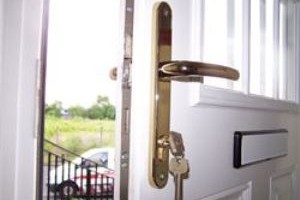This company has no active jobs
The One Window Leak Repair Trick Every Person Should Be Able To
How to Repair Window Leaks: A Comprehensive Guide
Window leakages can be a considerable source of aggravation for property owners, leading to water damage, mold development, and increased energy expenses. Whether you're handling a minor drip or a more significant leak, comprehending the causes and services can help you attend to the issue efficiently. This thorough guide will walk you through the steps to repair window leaks, ensuring your home stays dry and comfy.
Understanding Window Leaks
Before diving into the Repair a door process, it's vital to understand why window leakages occur. Typical causes consist of:

- Poor Installation: Improper installation can leave gaps around the window frame, enabling water to seep in.
- Use and Tear: Over time, the seals and weatherstripping around the window can weaken, resulting in leakages.
- Broken or Damaged Glass: Cracks or holes in the glass can enable water to get in.
- Clogged Gutters and Downspouts: When gutters are clogged, water can overflow and seep into the window frame.
- Flashing Issues: Improper or damaged flashing around the window can cause water to penetrate the wall.
Step-by-Step Guide to Repairing Window Leaks
Determine the Source of the Leak
- Visual Inspection: Start by analyzing the window and the surrounding area for any noticeable indications of damage or wear.
- Water Test: Use a garden hose pipe or a spray bottle to wet the exterior of the window. Watch for water to appear inside the room, which can help determine the precise location of the leak.
Prepare the Work Area
- Clear the Area: Remove any furniture or products that could be harmed by water.
- Protect the Floor: Lay down plastic sheeting or towels to catch any water or debris.
Evaluate the Damage
- Check the Frame: Look for gaps, cracks, or loose sections in the window frame.
- Examine the Seals: Inspect the weatherstripping and seals for signs of wear or damage.
- Examine the Glass: Check for any fractures or holes in the glass.
Repair the Damage
- Seal Gaps: Use caulk or silicone sealant to fill any gaps in the window frame. Use a thin, even layer and smooth it out with a caulk smoothing tool.
- Replace Weatherstripping: If the weatherstripping is used out, remove it and install new strips. Ensure they fit comfortably to prevent air and water from going through.
- Repair or Replace Glass: For small fractures, you can utilize a glass repair set. For bigger damage, consider replacing the whole pane of glass.
- Repair or Install Flashing: If the flashing is harmed or missing out on, replace it with new material. Guarantee it is correctly set up to direct water away from the window.
Test the Repair
- Repeat the Water Test: Once the repairs are complete, repeat the water test to make sure the leak has actually been effectively sealed.
- Look For Air Leaks: Use a lit candle light to evaluate for air leaks around the window. If the flame flickers, it may suggest a gap that needs further attention.
Maintain the Window
- Routine Inspection: Periodically check the window for indications of wear or damage.
- Clean Gutters: Ensure that gutters and downspouts are clear to prevent water from overruning.
- Apply Sealant: Reapply sealant as needed to preserve a water tight seal.
FAQs
Q: Can I repair a window leakage myself, or should I call a professional?A: Minor leaks can typically be repaired by house owners with standard DIY skills. However, if the damage is comprehensive or you are uncertain about the repair procedure, it is best to seek advice from an expert.
Q: What type of caulk should I utilize for window repairs?A: Silicone caulk is a popular choice for window repairs due to its flexibility and resilience. It can hold up against temperature level modifications and is resistant to water and UV rays.
Q: How typically should I inspect my windows for leaks?A: It is a good practice to inspect your windows at least once a year, preferably before the rainy season or winter. This can help you capture and deal with any concerns early.
Q: Can I utilize a dehumidifier to manage moisture from a window leakage?A: While a dehumidifier can help decrease wetness in the air, it is not a long-lasting option for a window leakage. Addressing the source of the leak is necessary to avoid further damage.
Q: What are the signs that my window requires to be replaced?A: Signs that a window may require to be replaced consist of significant damage, consistent leakages, trouble in opening or closing, and high energy expenses due to poor insulation.
Window leakages can be a nuisance, however with the right method, they can be effectively repaired. By determining the source of the leak, preparing the workspace, and following the steps laid out in this guide, you can restore the stability of your windows and secure your home from water damage. Routine upkeep and evaluations can also help prevent future leakages, ensuring your windows stay in top condition.
By taking proactive actions, you can delight in a dry, comfy, and energy-efficient home.

- Endereço Campuchia
